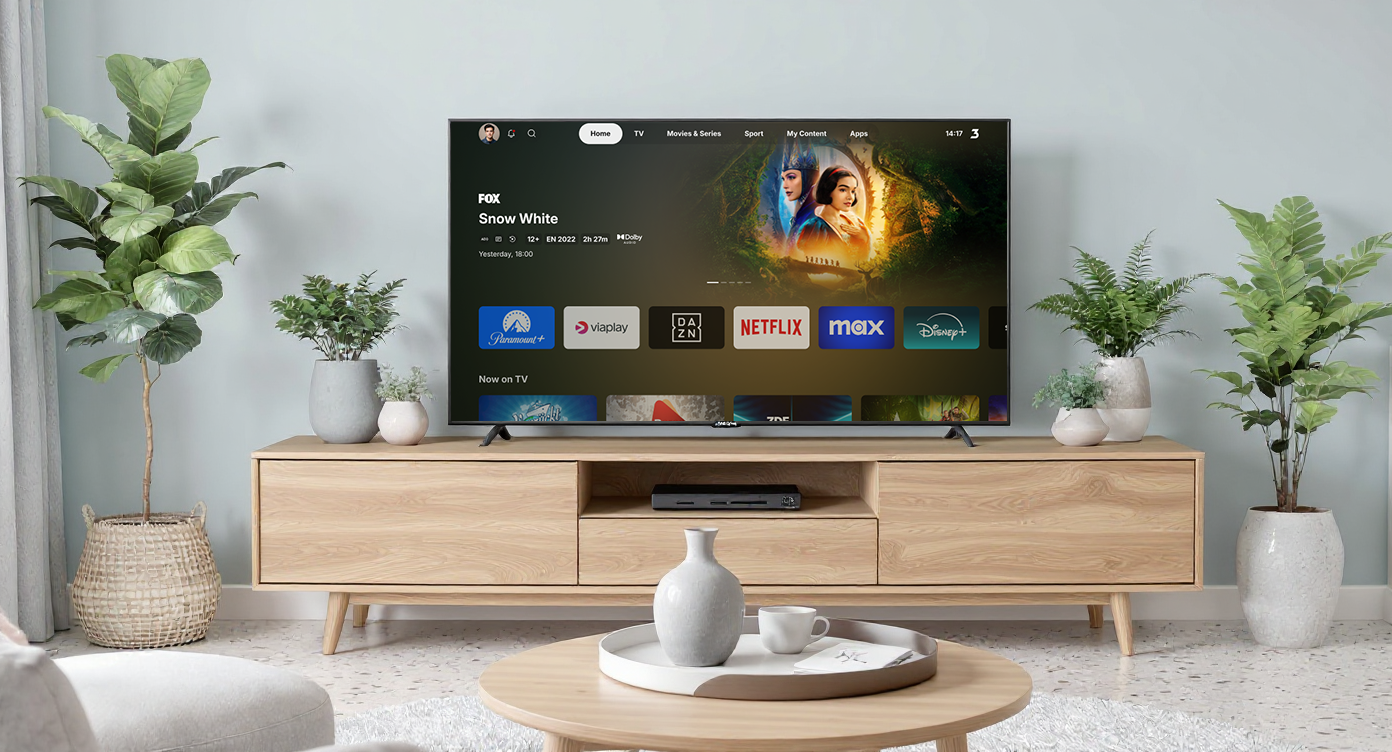Meet Us at CES 2026 | Jan 6-9
Book a meeting

In today’s Pay TV landscape, platform transformation is no longer a nice-to-have, it's a strategic necessity. But the real challenge doesn’t lie in building a modern platform. It lies in migrating existing users, smoothly and successfully, to a better experience across devices, without losing their trust, habits, or satisfaction.
This shift isn’t just about new interfaces. It's a high-stakes opportunity to:
Legacy users are diverse, spanning a spectrum of habits and expectations. A few simplified personas:
In a recent deployment, we saw that traditional users value the instant gratification of live TV starting automatically when they power on their device. We made this a configurable option and are now developing more adaptive UX features to improve the experience for different user types and personas. The lesson? Not all customers want the same experience. By providing options, configurable by the users or the operator, we can build trust, satisfaction and engagement.
With 3Ready, operators can segment users and configure experiences across all devices and markets dynamically. That means one platform can primarily surface Live TV and zapping for Traditionalists, while offering personalised carousels and profile switching for Streamers.
Takeaway: Personalisation starts with real personas and user feedback, not with assumptions.
Even when change brings better experiences, it can disrupt user confidence. The most successful migrations respect legacy habits while easing users into an inevitably more feature-rich, modern TV UX.
Start with what users know:
Then introduce enhancements with context:
This gradual, guided approach retains muscle memory while encouraging adoption.
Takeaway: Lead with empathy. Change should feel like evolution, not disruption.
Today’s users move fluidly across devices, from STB or smart TVs to tablets to mobile on the go. A cohesive, context-aware UX is now table stakes.
But continuity shouldn’t mean uniformity. The UX should also reflect the intent, location, and screen:
Allente, a leading Nordic operator, migrated millions of subscribers from legacy Pay TV systems to a unified, cloud-based experience across set-top boxes, Smart TVs, web, and mobile.
Using 3Ready, Allente is able to deliver:
By blending modern features with trusted workflows, Allente strengthened engagement across all customer segments.
Lesson: Strategic UX migration works, even at scale, when it’s grounded in real user behaviour.
%201.png)
STBs, Smart TVs, and mobile devices all offer different capabilities, and users interact with them in different ways. A successful UX strategy embraces this.
3Ready enables operators to:
Takeaway: Respect the platform. One experience, tailored by context.
Modern UX can’t wait for the next development cycle. Teams need the ability to react instantly, to user needs, partner promotions, or market trends.
With 3Ready Control Center, business users (not developers) can:
At Allente, the editorial team curates the entire app experience across devices, from content placement to partner prominence to market-specific layouts. The team can launch campaigns and curate branded partners areas , e.g. for Sky Showtime, Channel4, BBC Nordic, HBO Max, Prime, Viaplay and others.
The result? Faster time-to-market and experiences that adapt to each Nordic market's unique preferences.
Takeaway: Put UX in the hands of the business. No code. No delays.
Many operators assume they need to overhaul their entire infrastructure before modernizing UX. That's simply not true. The smartest approach? Start with the experience users see, not the systems they don't.
3Ready is designed to work with your existing infrastructure:
You can deliver Netflix-quality UX while your backend evolution happens at its own pace. Your customers get immediate improvements, and you get breathing room to plan infrastructure updates strategically, not urgently.
Takeaway: Don't let perfect be the enemy of better. Start where your users are.
UX migration is also emotional. Users worry about losing their habits, favourite shows, or getting lost in unfamiliar menus.
Best practices include:
Takeaway: Migration isn’t just technical, it’s emotional. Treat it as both.
The best UX is never finished. It evolves through data, insight, and iteration.
Operators need:
3Ready's analytics and telemetry help you connect user behaviour to actionable insights, and continuously improve the experience
Takeaway: Your UX should learn from every click, tap, and scroll.
To keep improving, UX must be embedded in the organisation, not siloed in a design or dev team.
Smart operators have learned to bring technical teams into UX discussions from day one. Quick prototypes and early feasibility checks prevent over-engineered solutions and accelerate time-to-market. When product vision meets technical reality early, the result is more achievable innovations that ship.
This requires:
Takeaway: UX should be treated like a product, managed, measured, and evolved.
The most successful pay-tv operators and telcos aren’t just modernising their platforms, they’re modernising their approach.
They treat UX migration as:
As Allente’s experience shows, when migration is handled with empathy, adaptability, and strategic focus, it becomes a signal, not of disruption, but of progress.
Final Takeaway: Don’t just upgrade the platform. Bring your audience with you.


